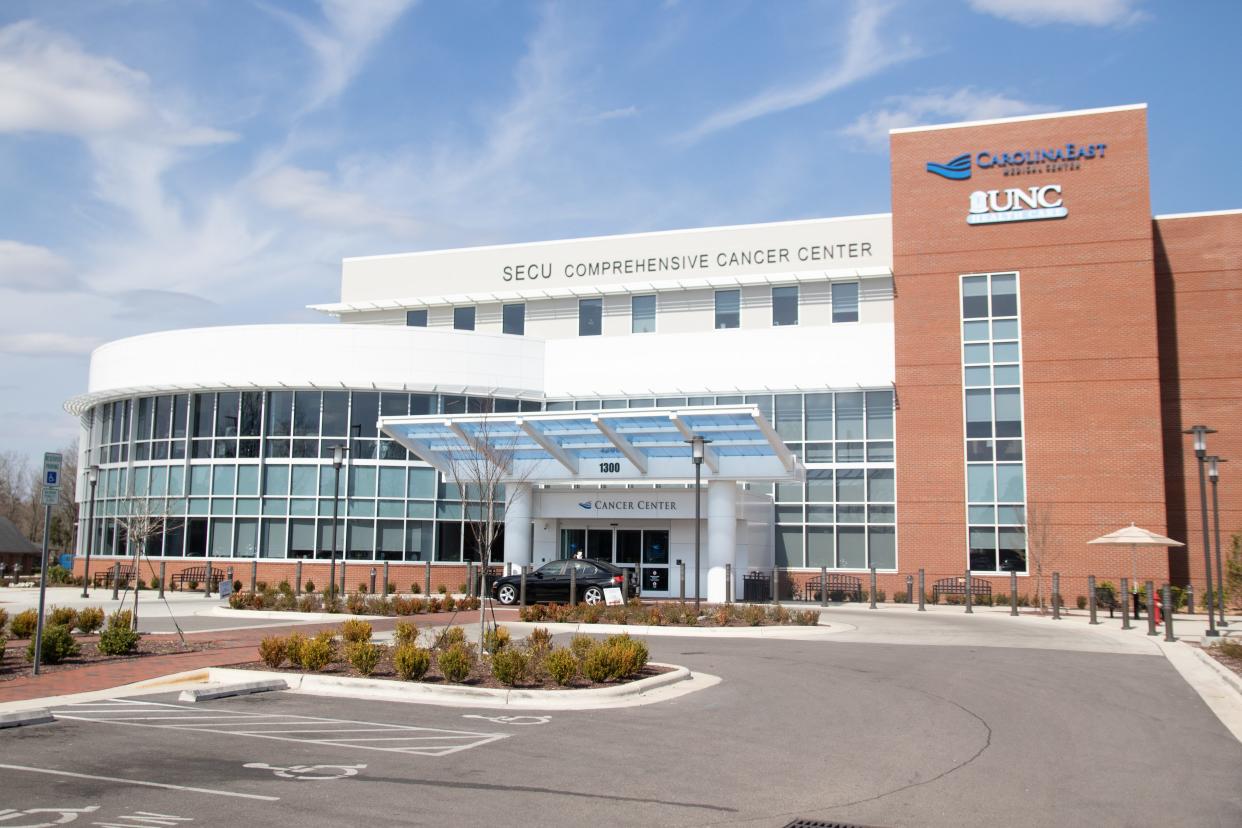Breast Cancer Awareness: How Craven County is fighting to catch it early, lower the risks

Since 1985, the United States has recognized October as National Breast Cancer Awareness Month, a time annually devoted to educating the public about breast cancer and the importance of early detection and access to timely, quality care.
According to information from the Centers for Disease Control and Prevention, each year in the United States approximately 264,000 women get breast cancer and 42,000 women die from the disease.
Most breast cancers are found in women who are 50 years old or older, but the disease also affects younger women.
Though men are also diagnosed with breast cancer, it is at a much lower rate. About 1 out of every 100 breast cancers diagnosed in the United States is found in a man.
In January 2020, Craven County residents got a new weapon in the battle against breast cancer and other forms of the disease with the opening of the SECU Comprehensive Cancer Center at CarolinaEast Medical Center in New Bern. The new facility consolidates treatment and recovery options that were previously fragmented throughout the county.
The SECU Cancer Center includes radiation oncology, medical oncology, nutrition services, a specialty pharmacy, social worker and psychological support services, and a palliative care and survivorship program.
What are the symptoms of breast cancer?
The most common symptoms of breast cancer are:
Any change in the size or the shape of the breast.
Pain in any area of the breast.
Nipple discharge other than breast milk (including blood).
A new lump in the breast or underarm
What are the risk factors?
Studies have shown that an individual's risk for breast cancer is due to a combination of factors. Most breast cancers are found in women who are 50 years old or older.
The risk factors for breast cancer come in two main categories: those that can be controlled and those that cannot.
Among those that can be changed are:
Not being physically active.
Being overweight or having obesity after menopause.
Taking hormones. Some forms of hormone replacement therapy (those that include both estrogen and progesterone) taken during menopause can raise risk for breast cancer when taken for more than five years.
Having a first pregnancy after age 30, not breastfeeding, and never having a full-term pregnancy can raise breast cancer risk.
Drinking alcohol
Risk factors that cannot be changed include getting older and having a family history of breast or ovarian cancer.
Others include:
Genetic mutations. Women who have inherited changes to certain genes, such as BRCA1 and BRCA2, are at higher risk of breast and ovarian cancer.
Starting menstrual periods before age 12 and starting menopause after age 55 expose women to hormones longer, raising their risk of getting breast cancer.
Having dense breasts, which can sometimes make it hard to see tumors on a mammogram.
Personal history of breast cancer or certain non-cancerous breast diseases. Women who have had breast cancer are more likely to get breast cancer a second time.
Previous treatment using radiation therapy. Women who had radiation therapy to the chest or breasts before age 30 have a higher risk of getting breast cancer later in life.
Lowering the risks
The CDC recommends lowering the risk of breast cancer by maintaining a healthy weight and exercising regularly; not drinking alcohol; and breastfeeding when possible.
Mammograms are recommended as the best way to find breast cancer early, when it is easier to treat and before it is big enough to feel or cause symptoms.
Reporter Todd Wetherington can be reached by email at wwetherington@gannett.com. Please consider supporting local journalism by signing up for a digital subscription.
This article originally appeared on Sun Journal: How Craven County is fighting to catch breast cancer early, lower risks

